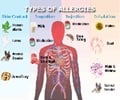University of Cincinnati (UC) environmental health experts say their research improves prior methods of classifying exposure to diesel exhaust particulates that help minimize inaccuracies and...
University of Cincinnati (UC) environmental health experts say their research improves prior methods of classifying exposure to diesel exhaust particulates that help minimize inaccuracies and better predict a child’s risk for wheezing.
Many prior air pollution studies rely heavily on what are known as proximity (distance) exposure models, which assume all subjects in a given distance from an exposure source—for example, a major interstate highway—are equally exposed.Pat Ryan, lead author of the UC study, says that isn’t necessarily true in urban environments, where infants are exposed to a large number of pollutants, and he advocates using the so-called land-use regression model.
"Unlike proximity models," says Ryan, "land use regression lets us consider more complex exposure factors—like elevation and the type or number of passing vehicles—in our initial assessment. This allows us to create ‘buffers’ around specific sample sites and control for factors influencing that location’s overall diesel exposure levels."
Specific models are needed for evaluating exposure levels in large cities to accurately determine exposure levels and identify populations at risk for high exposure to air pollutants, Ryan says.
Ryan and his coauthors analyzed data from 622 infants enrolled in the Cincinnati Childhood Allergy and Air Pollution Study (CCAAPS) who were identified as being at greater risk for developing allergies because at least one of their parents had allergies.
The CCAAPS, funded by the National Institute of Environmental Health Sciences, is a five-year study examining the effects of environmental particulates and certain types of traffic on childhood respiratory health and allergy development. All infants in the study had at least one parent with known allergies.
Advertisement
Research has shown that diesel exhaust particles (DEP), breathable particles able to absorb and transport proteins, aggravate rhinitis (hayfever) and asthma symptoms.
Advertisement
Source-Eurekalert
SRM











